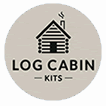Temperature Control in Your Potting Shed
Call Now 01342 477774
Tips and Techniques
Your potting shed is a sanctuary for nurturing plants, starting seedlings, and pursuing your gardening passions. To create an ideal environment for your green friends, mastering temperature control is essential. In this comprehensive guide, we'll explore various methods and techniques to ensure your potting shed remains at the perfect temperature year-round.
I. Understanding Temperature Needs
Before delving into temperature control methods, it's crucial to understand the temperature requirements of your plants. Different plants have varying temperature preferences. Some thrive in cooler conditions, while others prefer warmth. Research the specific needs of the plants you're cultivating to provide the best care.
II. Insulation Matters
Proper insulation is the foundation of temperature control. It prevents heat loss during colder months and keeps the shed cooler in the summer. Here's how to ensure your potting shed is adequately insulated:
1. Insulated Walls and Roof
-
Wall Insulation: Use materials like fiberglass or foam board insulation to line the walls.
-
Roof Insulation: If your shed has a pitched roof, insulate the ceiling to prevent heat from escaping.
2. Sealing Gaps and Cracks
Inspect your shed for any gaps or cracks that may allow drafts. Seal them with caulk or weatherstripping to maintain a consistent temperature.
III. Ventilation for Temperature Regulation
Proper ventilation is essential to prevent overheating during summer and ensure air circulation. Here's how to achieve effective ventilation:
1. Louvered Vents
Install louvered vents on opposing walls to create cross-ventilation. These vents can be opened and closed as needed.
2. Roof Vents
Roof vents or skylights with adjustable openings help release hot air that rises to the top of the shed.
IV. Heating Methods for Winter
Maintaining warmth during the winter is critical to protect your plants. Consider these heating options:
1. Electric Heaters
Electric heaters are efficient and easy to control. Choose a heater with a thermostat to maintain a consistent temperature.
2. Radiant Floor Heating
Installing radiant floor heating provides even warmth from the ground up, ensuring plants' roots stay cozy.
3. Wood-Burning Stove
A wood-burning stove offers rustic charm and effective heating. Ensure proper ventilation and safety measures.
V. Cooling Solutions for Summer
Summer heat can be challenging for both plants and gardeners. Here's how to keep things cool:
1. Shade Cloth
Install shade cloth on the exterior of your shed to filter sunlight and reduce interior temperatures.
2. Fans
Ceiling or oscillating fans enhance air circulation and lower the perceived temperature.
3. Evaporative Coolers
Evaporative coolers, also known as swamp coolers, use water to cool the air. They work well in dry climates.
VI. Smart Temperature Control
Consider integrating smart technology into your potting shed. Smart thermostats and climate control systems allow remote temperature monitoring and adjustment, ensuring your shed stays just right for your plants.
VII. Monitoring and Maintenance
Regularly monitor the temperature in your potting shed and make adjustments as needed. Perform maintenance on heating and cooling systems to ensure they function optimally.
VIII. Conclusion: A Haven for Your Plants
Creating the perfect temperature in your potting shed is essential for healthy plants and enjoyable gardening. By insulating, ventilating, and selecting the right heating or cooling methods, you can transform your potting shed into a haven where your plants thrive year-round. Remember to tailor your approach to your specific plant species and local climate, and you'll reap the rewards of a flourishing garden.
With these temperature control techniques, your potting shed will become a paradise for both you and your plants, allowing you to indulge in your gardening passion no matter the season.
